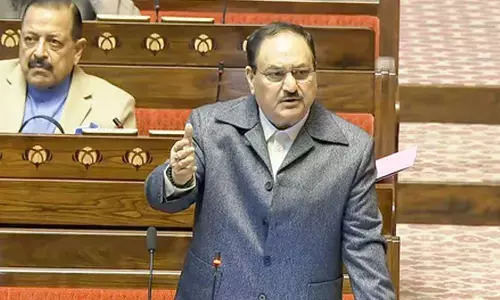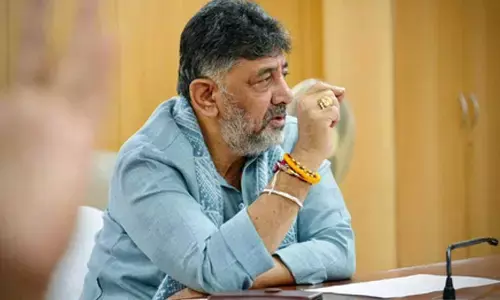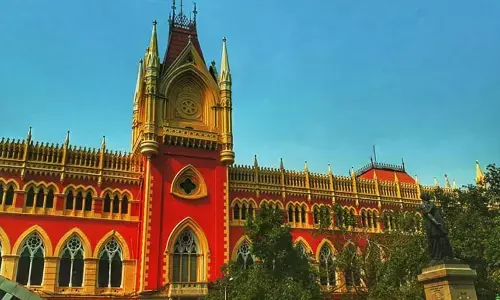MyVoice: Views of our readers 20th October 2020

MyVoice: Views of our readers 31st December 2020
This has reference to the editorial – It is time the civic body acted right; city is under threat
Hy'dar'abad!
This has reference to the editorial – It is time the civic body acted right; city is under threat. (October 19).It is time theHyderabad city planners rationally focused their attention and creativity, learning from the monsoon fury feedback, to prudently gear up to face the flood situation in the twin cities.
I lived in Secunderabad for over 30 years of my life, and continue to visit the place; every year and I love the city of my birth. The city has undergone tremendous change by way of infrastructure development as metro rail began the service on routes and malls and multiplex cinema halls mushroomed in the city. The Hyderabad Municipality did not care for the removal of encroachments to the tune of 28,000 in number, in several parts of the city that included dargahs and mosques, located in the middle of several busy main roads, creating bottlenecks for smooth traffic flow. The devastation in the city should make the GHMC and the State government sit up to avoid similar catastrophes in future.
This must be a single point of agenda to save places that are vulnerable to water logging, due to inadequate drainage. The existing nalas (canals) in many areas of the twin cities which are not properly maintained as domestic and city waste is callously dumped into them. The bad town planning methods of giving approval for construction in low-lying areas which were previously tanks and water bodies that left no room for the excess water to drain away, during heavy rains and spare the localities from watery graves must be the top priority by the concerned authorities in future.
There are problems of encroachment on all available places on the banks of Musi, in parts of the old city, preventing free flow of flood water, said to be the main reason for the inundation of localities. The open uncovered drains, and bad roads took the toll of several unwary lives and vehicles in the past. There have been many such incidents in the Hi-tech city area, when people were sucked into them. The AIMIM, on its part, should play a constructive and cooperative role for the welfare of all.
S. Lakshmi, Wayanad
Almost every year the twin cities and its suburbs receive heavy downpour. The misery faced by the denizens on account of flooding of low lying areas, water logging, overflowing drains are , not to mention, a common feature. And with it loss of lives due to wall and roof collapses, people being swept away by the swirling surging waters is heart rending. The time for the city's civic body to take measures on war footing is all the more a dire necessity These are : Levelling of roads especially in low lying areas, repairing of pot holes, keeping ready a disaster team from the SDRF, demolishing unauthorised & very old constructions which includes apartments and individual houses., construction of rain water harvesting pits etc.
The municipal authorities need to make construction of Rain Water Harvesting mandatory for all new apartment buildings & if possible urge the old apartment builders, & owners of individual houses to take up construction of rain water recharging pits. This will save enormous quantity of runaway rain water which otherwise gets wasted. It's high time the civic administration gets its act together to ensure the safety of citizens.
N R Raghuram, Hyderabad
Time to 'traditionalise' religions
The controversy from a simple and beautiful advertisement points to a deeper problem in understanding Indian society. Defining religion in Indian context through a book, a God, a doctrine, a Temple is problematic. India does not have religions but a huge number of traditions (sampradayas) with rituals as its foundational basis. Rituals unite people and religions divide people. The defining aspect of any traditional culture is an indifference to differences going beyond the standard tolerances or acceptances. It is a metaphysical and sociological impossibility that Indian culture knows of religions as reasoned by eminent scholars.
Ironically, secularism seems to be generating fundamentalism instead of being an antidote to it. No state or court possesses an impartial uniformly applicable scientific criterion of identifying and delimiting religion. Core issues of Uniform Civil Code, temple control by governments, and proselytization become key sore points in the discourse of secularism in the country.
Historically, Indian society was far more tolerant and liberal than any society so far. For over a millennium, India had presence of Vedic, non-Vedic, and even atheistic traditions living with Zoroastrian Parsis, Muslims, Jews, and Christians in mostly peace. Indian society never disintegrated despite the diversity; hence it must have known successful practices and mechanisms of coexistence. The assumption that all conflicts are in support of 'ultimate ideals' and 'truth value' of individual groups is brilliantly wrong in the Hindu-Muslim conflicts in India.
Different from religious conflicts between Christian confessions or between Islam and Christianity in the West, these conflicts have been more socio-economic and political. There are no attempts to study this. Due to an inappropriate secularism, a flexible, absorbing mass of traditions slowly converts to a religion in trying to define holy books, principles, and ideals. Starting with the Arya Samaj and the Brahmo Samaj, through Savarkar's writings, through the political movements post-independence, a rich mass of pluralistic traditions stringently defines itself, crystallizing into 'Hindutva', which the critics want to eagerly label as the almost oxymoronic 'Hindu fundamentalism' or even 'fascism'.
Dr Pingali Gopal, Warangal



















